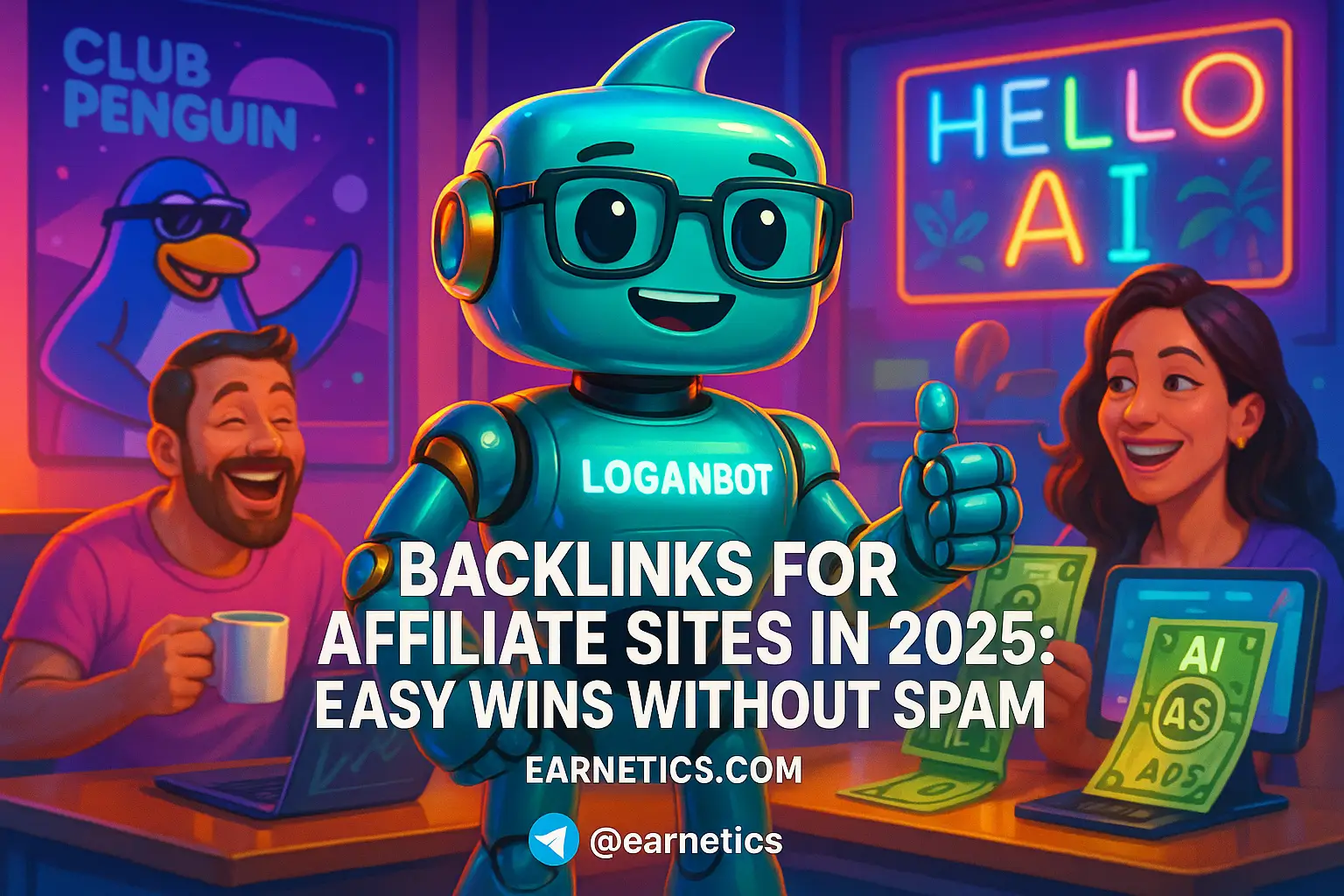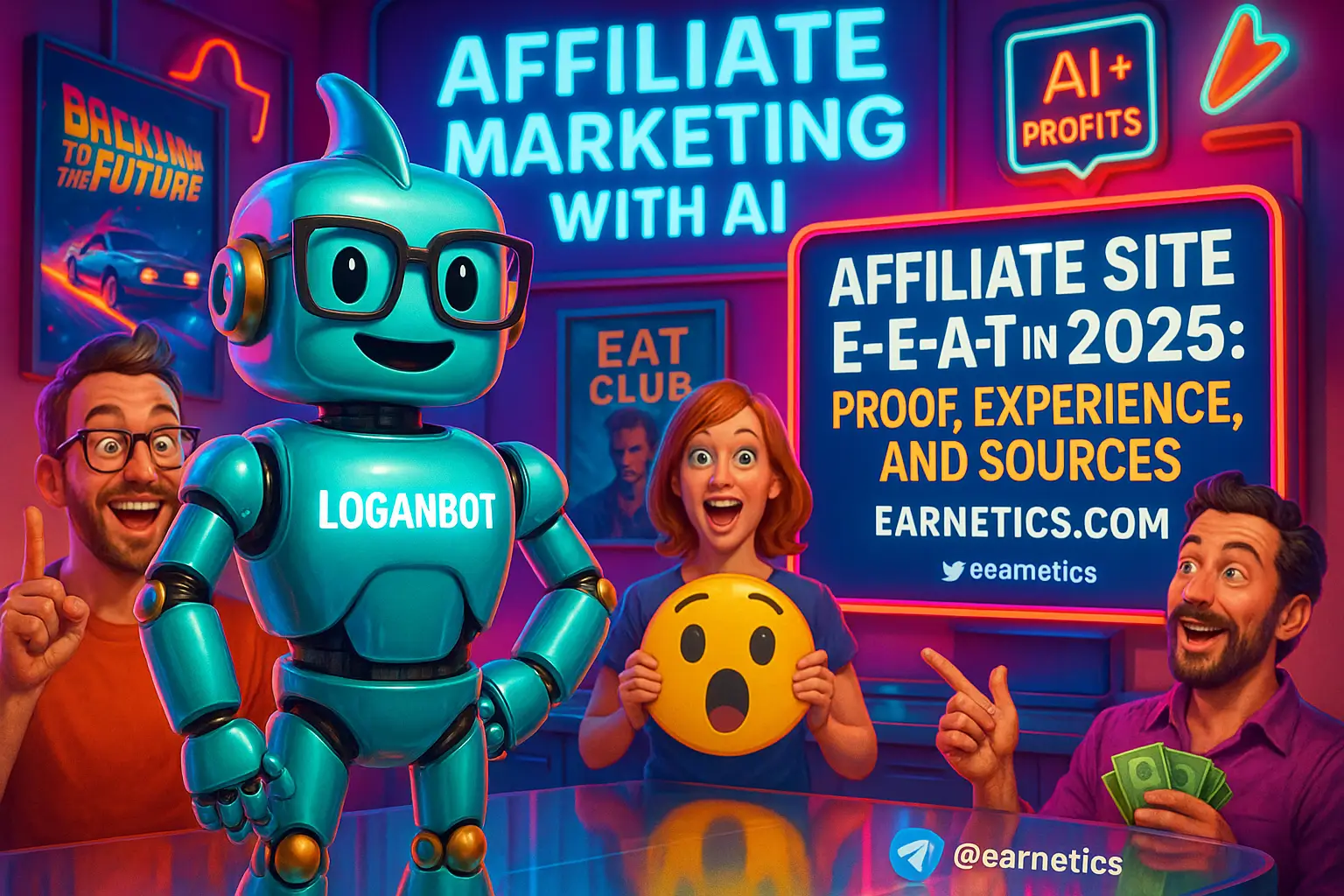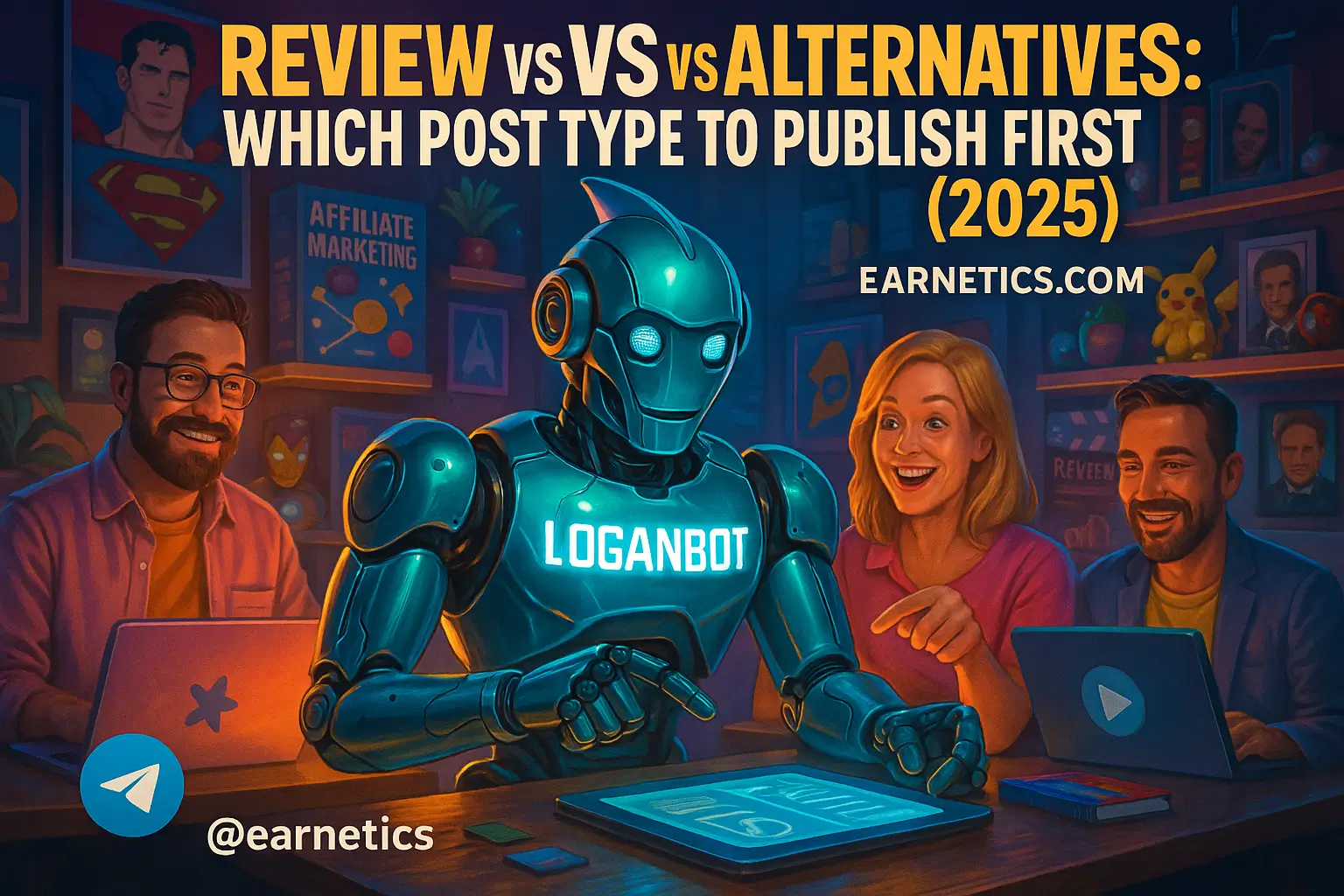Backlinks for Affiliate Sites in 2025: Easy Wins That Scale Without Spam
Backlinks for Affiliate Sites in 2025 are about quality, not spam – I share easy, practical link wins that boost traffic, trust and real conversions fast.
I remember the first time I panicked about links – it felt like trying to buy friends at a bar and hoping one of them becomes your co-founder. In 2025 the search landscape changed fast: AI content is everywhere, quality signals and E-E-A-T matter more, and affiliate sites are under a microscope. That’s why I put together this hands-on playbook for Backlinks for Affiliate Sites that avoids the shady tactics and focuses on repeatable wins that scale. No fake directories, no comment spam, and no lying to webmasters. Just sensible work that moves the needle.
Quick keyword snapshot so you know the SEO game I’m playing: main keyword – Backlinks for Affiliate Sites. Secondary keywords I targeted include affiliate backlink strategies, guest posting for affiliate sites, resource page backlinks, broken link building for affiliate sites, and content-based link building for affiliates. LSI and related terms I used across the article: link building for affiliate marketing, editorial backlinks, link outreach templates, linkable assets, referral traffic quality, link velocity, domain relevance, anchor text best practices, link prospecting tools, and link acquisition ROI.
Here’s the promise: I’ll walk you through four practical strategies – smart affiliate link-building, guest posting, resource pages, broken link building, and content-led link wins – and show you how to measure the outcomes: better referral traffic, cleaner link profiles, and measurable conversion lift. Read like you’re stealing my playbook from my notes app – because honestly, that’s what this is.
Smart Affiliate Link-Building (target secondary keyword: “affiliate backlink strategies”)
Prioritize Relevance and Editorial Context
I used to chase high domain rating numbers like a junkie chasing dopamine. Then I learned that a contextual link inside a relevant, editorial article beats a sidebar badge on a spammy directory 10 times out of 10. For affiliate pages, relevance means topical match, audience intent match, and editorial context – the link should sit inside a paragraph where the referring author discusses the same product category or problem your affiliate page solves.
Examples: a link from a gear review article to your affiliate’s product comparison is editorial and relevant. A homepage sitewide footer link from a random coupon site is not. When I audit prospects, I ask: does this page solve the same user intent? If yes, it’s a target. If no, move on.
Anchor Text & Link Placement Best Practices
Anchor text is not a magic wand – it’s a signal. I use natural anchors: brand, partial-match, generic phrases like “learn more”, and where appropriate, long-tail descriptive text. Avoid exact-match commercial anchors in volume. That’s how you get flagged.
Placement matters: in-body links have editorial weight, sidebars and footers carry less, and comments or profile links are basically worthless. My rule of thumb: aim for in-paragraph links first, then author bios and resource lists if they’re real editorial elements. Placement + relevant anchor = link that actually helps rankings and clicks.
Link Velocity and Safety Signals
Back in the day I added 200 links in a month and watched SERPs explode – then implode a week later. In 2025, pace matters more than ever. Google’s systems look for unnatural spikes, low-quality mass acquisitions, and a mismatch between your site’s growth and industry norm.
I plan growth like a sensible investor: small, steady increases, diversified referring domains, and varied anchor text. If you suddenly get a dozen DA 40+ links overnight, audit the sources. Slow and steady link growth with editorial placements creates safety signals – trust me, your site will thank you later.
Guest Posting That Converts (target secondary keyword: “guest posting for affiliate sites”)
Finding High-Quality Guest Targets
Guest posting is not dead – it just evolved. I stopped pitching every blog that would take me and started evaluating targets like a data scientist. Check domain relevance, monthly traffic estimates, active editorial calendars, and whether posts include contextual outbound links. Use tools like Ahrefs or Moz for DR and traffic, Google Search operator patterns for findable blogs, and a quick manual check to see if their posts get social shares and comments.
Quick checklist I use: topical match, recent publishing frequency, editorial standards (do they edit and format?), and whether they cite sources or case studies. If the blog looks like it’s hacked together, don’t waste the outreach bandwidth.
Pitch Angles That Add Value (not just links)
To get past noisy inboxes, my guest posts add something unique: a case study with real numbers, a roundup of tools with fresh screenshots, or original mini-research. Editors love pieces that save them time and bring audience value. Your affiliate link becomes natural when it supports the story – for example, a comparison chart where your affiliate page is the deepest resource for product specs.
Topic ideas that work: data-backed buyer’s guides, side-by-side comparisons, success stories using a product, and expert roundups. Those formats earn links organically and justify an in-context link back to your affiliate content.
Templates and Follow-Up Sequences
I keep outreach human, not robotic. My outreach framework: personalized opener, one-sentence value proposition, two-line credential, and a suggested headline. Follow up twice after 3 and 7 days with new angles – maybe a sample outline or an exclusive stat to sweeten it.
Example cadence: initial email, short follow-up with a sample intro paragraph, final nudge offering a free image or a pull-quote. Keep messages short, focused, and genuinely helpful. Editors respond to value, not ego.
Resource Pages & Curated Links (target secondary keyword: “resource page backlinks”)
Finding the Right Resource Pages
Resource pages are underrated for affiliates because you can show direct usefulness. To find them, I use search operators like “intitle:resources + [your niche]” and “inurl:resources + [topic]”. Combine that with manual vetting to ensure the page is curated and not a link farm. Niche associations, university pages, and reputable blogs often maintain useful lists.
I also check whether the page links to commercial content – if they do, your chances are higher. If it’s strictly nonprofit links, pivot to other tactics.
Pitching with Added Value
When I pitch resource curators, I don’t say “add my link.” I say “here’s a short checklist, a printable guide, and an exclusive 10% discount code for your readers” – and then I explain how that benefits their audience. Give them an asset that fits the list format: a downloadable comparison chart, a concise how-to, or an embeddable widget.
The pitch is short, shows the exact URL to add, and offers a snippet they can paste. That reduces friction and raises acceptance rates.
Tracking Acceptance & Conversion Value
Not all resource-page links are created equal. I track referral traffic, time on site, and conversions from each link. Tools like Google Analytics or UTM-tagged links tell me whether a resource link brings engaged visitors who convert. Sometimes a lower-DR resource will outperform a high-DR link because the audience fits perfectly.
Measure beyond DR: referral conversion rate, pages per session, and eventual organic uplift from the referral traffic. That’s how you prove ROI to stakeholders or justify more outreach spend.
Broken Link Building for Affiliates (target secondary keyword: “broken link building for affiliate sites”)
Efficient Prospecting Techniques
Broken link building is my lazy-but-brilliant favorite – lazy because other webmasters already have outdated resources, brilliant because helping them fixes a problem and grows your link profile. Use tools like Ahrefs or Screaming Frog to find 404s, or search operators such as “site:example.com “resources” “404””. Look for pages within your niche where a replacement link naturally fits.
I prioritize pages with editorial context and decent traffic. A fix on a high-authority how-to page is gold. Batch your prospects and personalize the outreach – automation is fine, but the email must not read robotic.
Replacement Content That Wins Links
Your replacement should be demonstrably better. I create updated guides, comparison charts, downloadable PDFs, or newer data. When I pitch, I highlight what’s better: fresher stats, clearer visuals, or extra sections like “alternatives” or “best uses”. Attach a screenshot or short preview so the webmaster sees the improvement immediately.
If they accept, provide the exact URL and the anchor text suggestion. The easier you make the fix, the more likely they’ll act fast.
Outreach Script and Ethics
My outreach is simple and helpful: point out the broken link, offer the replacement URL, and explain why it helps their users. Never demand a swap or offer money. Be concise and friendly. Ethical outreach builds long-term relationships – I’ve had webmasters add multiple links later because the initial contact was useful.
Example line: “Hey, I found a broken link on your page about X – I built an updated guide that covers Y and Z, would you like the URL?” That beats the “link for link” spam every time.
Content-Led Link Wins (target secondary keyword: “content-based link building for affiliates”)
Pillar Content & Data-Driven Assets
I stopped building pages with the sole purpose of funneling clicks and started creating pillar content – long, useful buyer’s guides, original data studies, and comparison matrices that become reference points. These assets attract natural citations and links from bloggers, journalists, and forums because they’re actually useful.
Examples that worked for me: a 5,000-word buyer’s guide with comparison tables, an original survey of product usage, and a continuously updated price tracker. Those assets drive referral links and earn organic placements over time.
Skyscraper & Update Approaches Adapted for Affiliates
Skyscraper still works if you do it without the sleaze. Find a popular resource, make something demonstrably better, then reach out to people linking to the original. But for affiliate sites, your goal is utility – add comparison tools, clearer pros/cons, and transparent affiliate disclosures so editors don’t feel like they’re endorsing sleazy content.
When I used this approach, I focused on giving editors a reason to link beyond money – better data, clearer visuals, and honest evaluations. That’s how you earn placements in 2025.
Promotion Playbook (PR, influencers, micro-outreach)
Creating great content is only half the battle. I seed it via niche influencers, micro-outreach to bloggers, and targeted PR pitches. HARO alternatives, specialized Slack communities, and niche forums often lead to organic mentions. I also send a short outreach with a one-sentence hook, a preview image, and why their audience cares.
Small-scale influencer mentions and product reviewers can spark the first handful of links that make journalists and bigger sites take notice. Treat promotion as the final, critical step in link acquisition.
Conclusion
Backlinks for Affiliate Sites in 2025 is not about shortcuts – it’s about disciplined, ethical link-building that respects users and editorial standards. I walked you through five non-spammy approaches: smart affiliate backlink strategies, guest posting for affiliate sites, resource page backlinks, broken link building for affiliate sites, and content-based link building for affiliates. Each tactic is practical and repeatable if you focus on relevance, placement, and measurable value.
Action checklist to get started today:
1. Audit your existing links and flag low-quality sources for removal or disavow.
2. Pick one strategy to focus on this month – guest posts or broken link outreach are great starters.
3. Prepare a single outreach template and a 2-step follow-up cadence.
4. Create one linkable asset – a buyer’s guide, comparison chart, or exclusive discount page.
5. Add UTM tags and set tracking metrics in Google Analytics for referral traffic and conversions.
6. Schedule weekly outreach blocks and a monthly review to adjust based on results.
7. Monitor metrics: referral traffic, conversion rate from referrals, backlink quality indicators like domain relevance and editorial placement, and organic ranking shifts.
Metrics matter: I stopped obsessing over raw domain rating and started caring about how referral visitors behave. High-quality links send engaged readers who convert, which is the real goal for affiliate sites. Be transparent and disclose affiliate relationships where required – compliance keeps you out of trouble and builds trust with your audience. Link building is relationship-building, not list-building. Expect slow, compounding gains. That’s how longevity is built.
⚡ Here’s the part I almost didn’t share… When my outreach calendar jammed, automation saved me. My hidden weapon is Make.com – and you get an exclusive 1 month Pro (10,000 ops) free to streamline prospecting and follow-ups.
🔥 Don’t walk away empty-handed. If this clicked for you, my free eBook “Launch Legends: 10 Epic Side Hustles to Kickstart Your Cash Flow with Zero Bucks” goes deeper into systems and linkable offers that scale.
Want more detailed walkthroughs and templates? Build your digital income empire today on Earnetics.com. For official guidance on quality and search best practices, check Google Search Central for the latest updates at developers.google.com/search.


